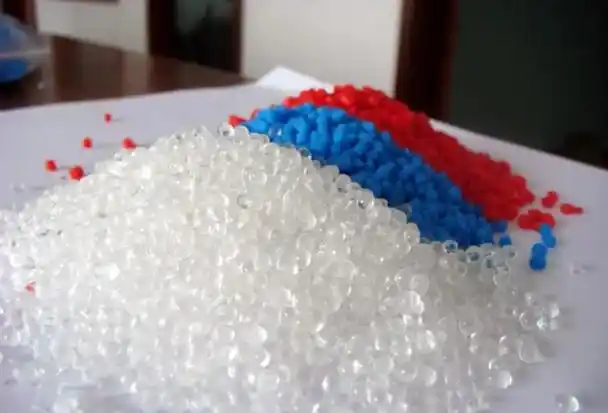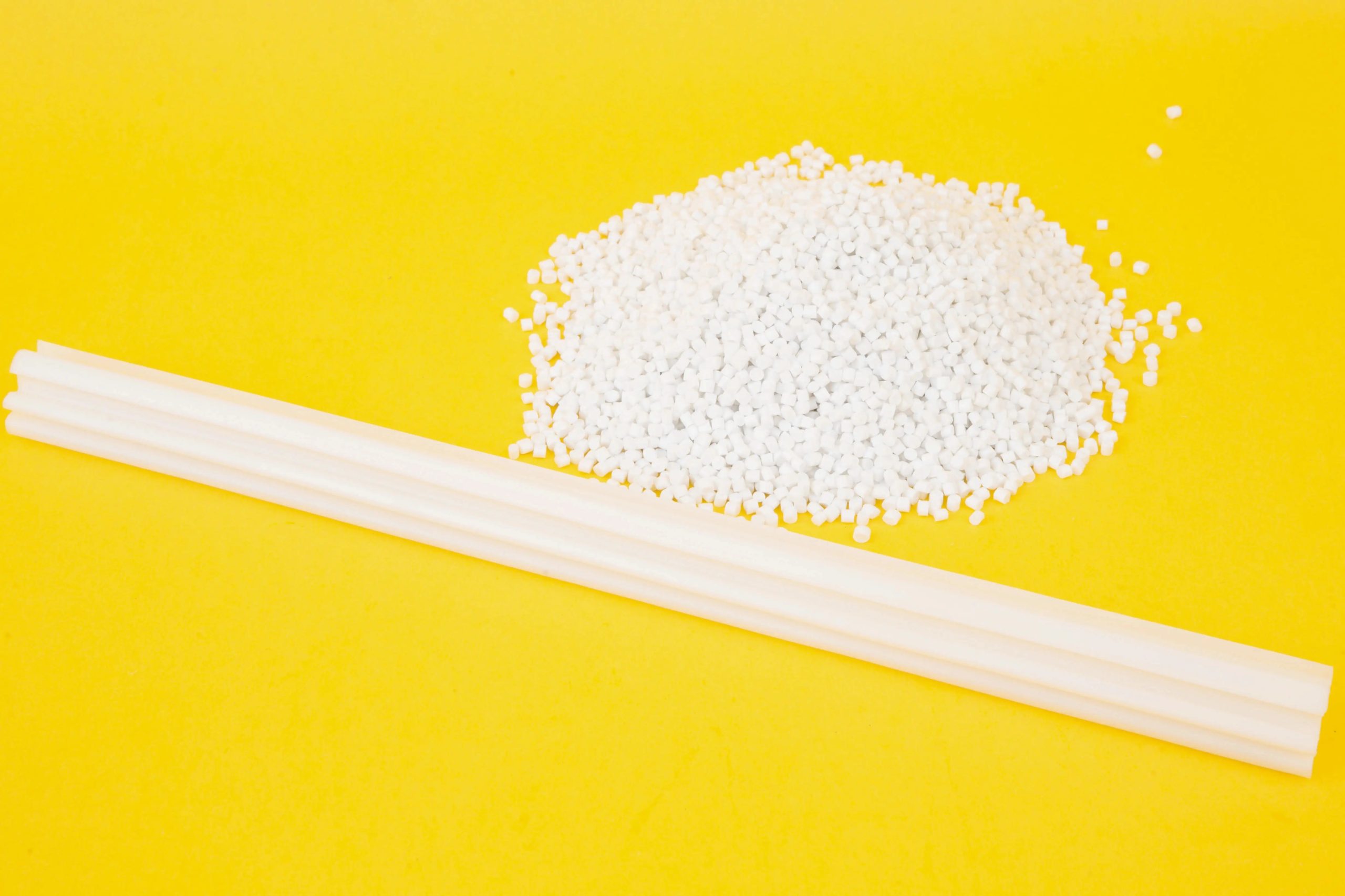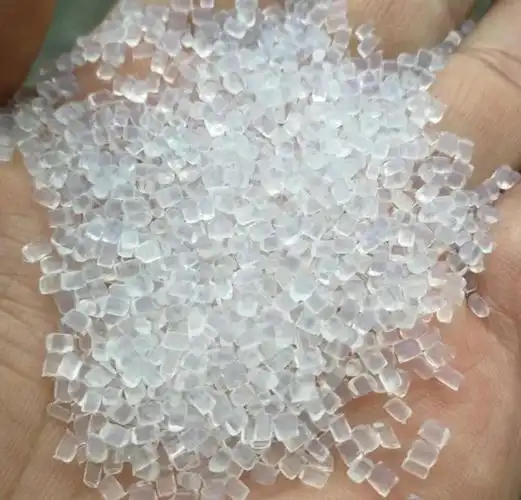As a materials engineer who’s spent years diving into the world of polymers, I’ve always been fascinated by the versatility of TPE, or thermoplastic elastomer. When someone asks, “What kind of material is TPE, and what’s it made of?” I know they’re likely curious about its unique properties or trying to figure out if it’s the right choice for their project—whether it’s for cables, medical devices, or car parts. TPE’s ability to combine rubber-like flexibility with plastic-like processability makes it a standout, but its composition can seem mysterious at first. In this article, I’ll break down what TPE is, its material classification, the key components of TPE raw materials, and how these affect its performance. Drawing from my hands-on experience, I’ll keep things clear, practical, and grounded to help you understand TPE and make informed decisions for your applications.

What Is TPE and How Is It Classified?
Let’s start with the basics: TPE, or thermoplastic elastomer, is a class of polymer materials that combines the elastic properties of rubber with the processing ease of thermoplastics. Unlike traditional thermoset rubbers (like vulcanized rubber), which are permanently set after molding, TPEs can be melted, reshaped, and recycled multiple times. This makes them incredibly versatile for manufacturing processes like injection molding, extrusion, and granulation.
I first encountered TPE while working on a project to develop flexible cable jackets for outdoor use. The client needed a material that was durable, flexible, and environmentally friendly, and TPE fit the bill perfectly. But to understand why TPE behaves the way it does, we need to look at its material classification and composition.
TPE Classification: TPEs are part of the broader family of thermoplastics, but they’re unique because they exhibit elastomeric behavior—meaning they can stretch and return to their original shape. They’re often categorized into several sub-types based on their chemical structure and performance:
SBC (Styrenic Block Copolymers): Like SEBS (styrene-ethylene-butylene-styrene) or SBS (styrene-butadiene-styrene), these are soft, flexible, and widely used in consumer goods.
TPU (Thermoplastic Polyurethane): Known for abrasion resistance and strength, ideal for medical and automotive applications.
TPO (Thermoplastic Polyolefin): Blends of polypropylene and rubber, common in automotive bumpers.
TPV (Thermoplastic Vulcanizate): Cross-linked rubber in a plastic matrix, offering superior elasticity and weather resistance.
TPEE (Thermoplastic Polyester Elastomer): High-strength and heat-resistant, used in industrial parts.
TPA (Thermoplastic Polyamide): Durable and flexible, often used in high-performance applications.
Each type has distinct properties, but they all share the ability to be processed like plastics while behaving like rubber. This dual nature comes from their unique molecular structure, which we’ll explore next when we look at their components.

Components of TPE Raw Materials
The magic of TPE lies in its raw material composition, which is carefully engineered to achieve specific properties like flexibility, strength, or flame retardancy. TPEs are typically compounded materials, meaning they’re made by blending several ingredients during production. Here’s a detailed look at the key components, based on my experience formulating TPEs for various applications:
Base Polymer
The backbone of any TPE is its base polymer, which determines its core properties. Depending on the TPE type, this could be:
Styrenic Block Copolymers (e.g., SEBS, SBS): These form the basis for soft, flexible TPEs used in grips, seals, or cable jackets. SEBS is particularly common for its weather resistance.
Polyurethane: For TPUs, providing toughness and abrasion resistance.
Polyolefins (e.g., Polypropylene, EPDM): Used in TPOs and TPVs for durability and cost-effectiveness.
Polyesters or Polyamides: For TPEE and TPA, offering high strength and heat resistance.
In one project, I worked with an SEBS-based TPE for medical tubing, chosen for its softness and biocompatibility. The base polymer dictates the starting point, but additives shape the final performance.
Plasticizers and Oils
Plasticizers, often paraffinic or naphthenic oils, are added to soften the TPE, enhancing flexibility and processability. These oils reduce hardness (measured in Shore A or D) and make the material more elastic. For example, in a TPE for shoe soles, I used a formulation with 20% oil to achieve a soft, cushioned feel. Too much oil, however, can make the material oily or reduce strength, so balance is key.
Fillers
Fillers like calcium carbonate, talc, or silica are added to reduce costs, increase stiffness, or improve specific properties. For instance, calcium carbonate is common in TPEs for cables to lower costs while maintaining flexibility. In a cable jacket project, I used a 30% calcium carbonate filler to hit a cost target without sacrificing performance. However, excessive fillers can reduce elasticity or cause processing issues, so formulations must be optimized.

Additives
Additives fine-tune TPE properties for specific applications:
UV Stabilizers: Like carbon black or hindered amine light stabilizers (HALS) to prevent degradation in outdoor use.
Flame Retardants: Halogen-free options like aluminum hydroxide for safety in cables or building materials.
Antioxidants: To protect against heat and oxidation during processing or use.
Colorants: Pigments or dyes for aesthetic purposes.
Processing Aids: Like lubricants to improve flow during extrusion.
In a recent project, I added a UV stabilizer to a TPE cable jacket to prevent cracking in sunny conditions, extending its lifespan significantly.
Reinforcing Agents
For high-performance TPEs (e.g., TPUs or TPVs), reinforcing agents like glass fibers or carbon fibers may be added to boost strength or stiffness. These are less common in softer TPEs but critical for applications like automotive parts. I once formulated a glass-reinforced TPU for a car dashboard component, balancing flexibility with durability.
Compatibilizers
In blends like TPOs or TPVs, compatibilizers (e.g., maleic anhydride-grafted polymers) ensure the polymer and rubber phases bond well, improving mechanical properties. Without them, the material can phase-separate, leading to weak pellets. I’ve used compatibilizers in TPV formulations to achieve a smooth, elastic finish.
Here’s a table summarizing the typical components of TPE raw materials:
| Component | Purpose | Common Examples | Typical Content |
|---|---|---|---|
| Base Polymer | Core structure and properties | SEBS, TPU, PP/EPDM | 50-80% |
| Plasticizers/Oils | Enhance flexibility | Paraffinic oil | 10-30% |
| Fillers | Reduce cost, adjust stiffness | Calcium carbonate, talc | 0-40% |
| Additives | Improve specific properties | UV stabilizers, flame retardants | 1-10% |
How TPE Composition Affects Performance
The combination of these components directly influences TPE’s performance, and understanding this can help you choose the right material for your needs:
Flexibility and Hardness: Higher oil content makes TPE softer (e.g., Shore A 20 for grips), while fillers increase hardness (e.g., Shore D 50 for rigid parts). I’ve adjusted oil levels in TPE formulations to fine-tune softness for ergonomic handles.
Durability: UV stabilizers and antioxidants extend lifespan in harsh environments, like outdoor cables. Without them, TPE can crack or degrade, as I saw in a poorly formulated cable exposed to sunlight.
Flame Retardancy: Halogen-free flame retardants make TPE safer for building or automotive use but can reduce flexibility if overused.
Processability: Processing aids and compatibilizers ensure smooth extrusion or molding, reducing defects like uneven pellets.
Cost: Fillers lower costs but can compromise elasticity if not balanced properly.
In one project, I formulated a TPE for medical tubing with minimal fillers to ensure biocompatibility and flexibility, while another project for automotive seals used high filler content to cut costs without sacrificing weather resistance. The key is tailoring the composition to the application.

Challenges in TPE Formulation and Solutions
Working with TPE raw materials can present challenges, especially when balancing cost, performance, and processability. Here are issues I’ve encountered and how to address them:
Inconsistent Properties: Variations in raw material batches (e.g., oil viscosity or filler particle size) can affect pellet quality. Always source from reputable suppliers and test each batch. I once caught a batch of off-spec SEBS that caused brittle pellets, avoiding a production disaster.
Degradation: Overheating during processing can break down oils or polymers, reducing elasticity. Use precise temperature control (e.g., 160-200°C for SEBS) and antioxidants to protect the material.
Poor Dispersion: Fillers or additives can clump if not mixed properly. A twin-screw extruder with kneading elements solves this, as I learned when improving a high-filler TPE for cables.
Environmental Sensitivity: Without UV stabilizers, TPEs can degrade outdoors. Always specify UV-resistant grades for outdoor use, as I did for a solar panel cable project.

Practical Tips for Working with TPE Materials
To help you select and use TPE effectively, here are tips from my experience:
Choose the Right TPE Type
Match the TPE to your application: SEBS for soft, weather-resistant parts; TPU for abrasion resistance; TPV for dynamic applications like seals. Consult suppliers for detailed datasheets.
Verify Supplier Quality
Work with reputable manufacturers (e.g., Kraton, BASF, Teknor Apex) and request certificates of analysis to ensure consistent raw materials. I always ask for test reports to avoid surprises.
Test Formulations
Before full-scale production, run small batches to optimize the blend of polymers, oils, and additives. This saved me from a costly mistake when a high-oil TPE turned out too soft for a client’s needs.
Store Materials Properly
TPE raw materials can absorb moisture or degrade if exposed to heat or sunlight. Store in a cool, dry place in sealed containers. I use dehumidified storage rooms to keep materials pristine.
Work with Experts
If formulating TPEs is new to you, collaborate with a compounder or supplier to develop a custom blend. I’ve partnered with compounders to create TPEs with specific hardness and flame-retardant properties.
My Personal Experience
A few years ago, I was tasked with developing a TPE for a flexible cable jacket in a renewable energy project. We chose an SEBS-based TPE with 25% paraffinic oil and 10% calcium carbonate filler, plus UV stabilizers for outdoor durability. The result was a soft, durable jacket that met strict environmental standards. However, early batches showed cracking due to insufficient UV stabilizers. After tweaking the formulation with 2% HALS, the cables lasted over five years without issues.
In another case, I worked on a TPU-based TPE for medical tubing. The client needed high flexibility and biocompatibility, so we minimized fillers and used a medical-grade polyurethane base. The tubing passed rigorous testing, and the project taught me the importance of tailoring compositions to specific requirements.

Conclusion
TPE is a thermoplastic elastomer, a unique material that blends rubber-like elasticity with plastic-like processability, making it ideal for diverse applications. Its raw materials—base polymers, plasticizers, fillers, and additives—are carefully combined to achieve properties like flexibility, durability, or flame retardancy. By understanding TPE’s classification and composition, you can choose the right type and formulation for your project, whether it’s a soft grip, a durable cable, or a high-strength automotive part. With proper material selection, testing, and storage, you’ll avoid common issues and unlock TPE’s full potential.
If you’re working with TPE or have questions about its composition, share your thoughts in the comments—I’d love to offer tailored advice! Below, I’ve answered some common questions to help you get started.
Frequently Asked Questions
1. Is TPE the same as rubber?
No, TPE is a thermoplastic elastomer that can be melted and reshaped, unlike thermoset rubber, which is permanently set. TPE is more recyclable and easier to process.
2. Can TPE be used outdoors?
Yes, but it needs UV stabilizers to prevent degradation. SEBS-based TPEs with HALS or carbon black are best for outdoor applications like cables or seals.
3. How do I know which TPE type to choose?
Match the TPE to your needs: SEBS for flexibility, TPU for strength, TPV for dynamic seals. Consult supplier datasheets or a compounder for guidance.
4. Are TPEs environmentally friendly?
TPEs are recyclable and can be halogen-free, making them more eco-friendly than PVC or thermoset rubbers. Choose halogen-free grades for low-toxicity applications.
5. How do fillers affect TPE performance?
Fillers like calcium carbonate reduce costs and increase stiffness but can lower flexibility or elasticity if overused. Balance filler content with performance needs.





